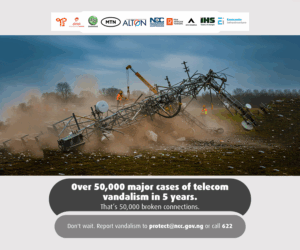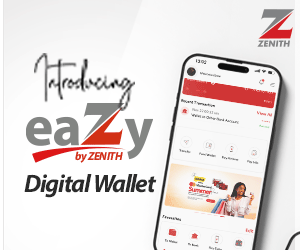If you’re like most founders, you probably think about your startup 24/7. You wake up in the morning brainstorming new product/service features, and most probably go to sleep contemplating arresting marketing and sales campaigns.
You probably cannot remember the last movie you saw at the theatre as your idea of fun is collaborating with developers overseas. And stalking venture capitalists online.
In truth, passion, hardwork and a healthy amount of obsession are more oft than not essential ingredients to entrepreneurial success. However, it is not uncommon for founders to become hyper–focused on initial ideas, particularly at the early stages, at the expense of one supremely important fact: A startup founder’s ultimate success is dependent on selling others on her business’ vision for the future.
In essence, your startup’s progress is contingent on your ability to pitch the values of who you are, what you aim to do and why it should matter, to the people who really matter – your potential investors.
Thus, reaching important milestones like raising venture capital, sourcing top talent and acquiring new customers all require the same skill – telling a story that makes people begin to dream in the same direction as you do.
And sometimes, grand as your idea may be, particularly with people on tighter schedules than even a decade earlier, you have just 30 minutes to lay out your plan in such a way they wish to buy into your idea. Other times, believe it or not, you have just 30 seconds to do this. Yeah, that long! (Ever caught the owner of a VC trying to board a flight?”)
Regardless, your job as a business owner looking to scale is simple; clearly communicate why a given audience should care about your business, enough to want to be a part of it.
Myriad tools exist to help you make this happen, but one delivers your story quicker, particularly under time constraints and with as much succinctness as you possibly wish it. The Pitch Deck.
In not too many words, the Pitch Deck is a moving business plan with a captivating picture reel, told in twenty (20) minutes or less.
It provides your audience with a brief overview of what is, what can be, and how your idea can bring ‘what can be’ to life, using a few relatable images, videos, and in some instances, audio to relay the message.
In many ways, it is like a structured argument, with aligning proof. You want to walk the listener through an argument as to why your idea will make an amazing business then convince them to help you achieve that goal by staking their monies.
Traditionally, the Pitch Deck is no more than 10–20 presentation slides long and typically follows, what can now be considered a universally agreed outline.
Starting with a problem or gap worth filling, it should then go on to deliver a clear–cut solution which your idea hopes to fulfil, the possible market size, your business and pricing model, if any, alongside services/product differentiators from the competition, and marketing plan. Of course, financials usually come in somewhere during the presentation, however, it is worthy of note that if you do a really great job of telling your story, then in more instances than one, it is not unheard of to have investors ask this part be skipped or totally ignored as a really good ‘ends will ultimately justify the returns’.
One fine example of this was former Microsoft owner, Steve Jobs, who told such great stories of future company possibilities, using some numbers of course, but rarely ever financials, that investors, even staff, happily rewarded him with their monies and time to help actualize what eventually became a common goal and a near trillion-dollar business.
Of course, not all of us may boast such natural talent, thus we will delve deeper into how to keep your Deck interesting enough to make a successful Series A funding.
Before we begin however, it is important to remember that a Pitch Deck has its place in the business world and as earlier stated, is a really great tool to
visually translate your idea into something tangible for people to see and maybe, feel. It however does not replace the Business Plan as this is a more in- depth and precise roadmap containing greater information, technical and
otherwise, than even what most twenty slide-long Decks can reveal. Thus, it is always advisable to have both tools handy, but one readily available, email–able and adaptable to open even on a smartphone (Think about the VC CEO you may catch at the airport who probably has only her phones in hand…)
First off, it is important to remember that most potential investors, particularly Venture Capitalists and Angel Investors, are constantly inundated with business proposals and requests from business owners, almost daily. It is thus critical to foremost, keep your Deck Short & Concise. Always work towards ten slides and a 30 minute, maximum, presentation length. 20 minutes average is still good.
However, 15 minutes is better. It is much harder to stay interesting with a longer Deck or even hold any attention after, say, 20 slides and 40 minutes into it.
If you cannot avoid a Deck longer than 15 individual slides, then perhaps, using such simple applications as MS Powerpoint, you may try overlapping one slide over the other using some animation magic. That way, and if your keep the presentation interesting and concise enough, you may cheekily get away with a extra few slides, with no one the wiser.
Next, there’s an old saying that images are worth more than a thousand words. And nothing can be truer than in the case of a good Pitch Deck. Using Relevant Images, not only brings your story to life, it also shortens talk time.
Scouring the internet for useful images is one recommended bootstrapping avenue. However, if your internet search yields negative results then perhaps you are better off working closely with a visual expert. Same goes for the financials. Using multi–colored charts and diagrams rather than numbers is a quaint way of still keeping things interesting while delivering your message at the shortest possible time.
Animations and Audios are also a cool way of spicing things up with your Deck. Just try to not overdo it and make it light enough that it does not take forever to view on a smartphone.
Simplicity, simplicity, simplicity. One key feature of a really good Pitch Deck is its simplicity. Using a ton of bullet points or describing extraneous technical, recruitment or customer onboarding processes or business jargons is an absolute no–no. Even images and pictures should be well spaced or animated to disappear or appear one at a time, and at given intervals, to allow your audience time to digest the information being fed them at a gradual pace. It need to have the ability of easy regurgitation to other potential investors if need be, and without the need for physical reference to every slide of your Deck.
Spending considerable time on this will yield positive results aplenty.
Do not give everything away immediately though. As much as you want to answer potential Series A investors’ most pressing questions to your business ideas so they know that you have done your homework on how things will pan out and most importantly, how you intend to offer a princely return on their investment, it is important to note that giving away too much information in the Pitch Deck may also be counterproductive.
Of course, you wish to overcome rejections from the onset, however, it is also okay to perhaps leave a few unanswered questions in their minds so they can contact you later, or, even engage you in a lively Q&A session after your presentation. This is mostly where greater information from your actual business plan or a second, much longer Deck, kicks in.
Thus, and as earlier stated, always keep your business plan handy and memorized so you can skip to parts of relevance easily without wasting too much of the investor’s time on flipping unnecessarily through pages or slides looking for one specific information.
However, let it be known that once you have reached this point in your Pitch, be confident that not only have you done a good job of your presentation but have perhaps found the right investors too. If not, then just keep trying and remember – not everyone may buy into your idea immediately (reference an
earlier article – Warning, Investors monies always comes with strings).
‘You cannot judge a book by its cover’, is a mantra that does not work very well in the case of Pitch Decks. Once again, images sell the Deck. Arresting Covers with interesting by–lines or payoffs should be designed in a way, investors wish to move forward with the rest of the presentation. Wild and wacky might be
good but moderation still works best. Thus, avoid profanity and any associated inclinations, be It in writing, image-wise, or verbally. Again, spending considerable time on this is important. Should you however not have neither the time nor the skill then employing expert hands is a good alternative. Just remember, the Cover sells the Deck.
The Flow, always remember the flow. As discussed earlier, there are different types of Pitch Decks and several ways you may wish to start or close each Presentation. However, over time, one arrangement has become almost universally acceptable. It is thus best to err on the side of caution to not stray too far from it: 1) The Problem, 2) The Solution, 3) Your Product/Service, 4) Product/Service Features, 5) Potential Market Size, 6) Business/Pricing Model, 7) Business Differentiator(s), 8) Marketing/Sales Plan, 9) Financial Projection(s), 10) Team, and of course, 11) Business Milestone(s) if you are already up and running as an entity.
Should you wish to keep your Deck under 10 slides then Slides 1& 2, or 3 & 4, or 6&9, can each be overlapped into one slide. However, if 15 slides, then either of 5, 6, 7, 8, or 9 may do with an extra slide here or there. Just remember, as earlier proscribed to Keep It Simple, and exciting.
Finally, and most important of all, the very last slide, the Call to Action Slide.
Remember that your Deck, beautiful as you might have designed it to be, is ultimately a Business Pitch and not just some fancy presentation with colorful images, charts and numbers. How much of your company you are offering, and how much you require to either upscale or get your idea off the ground should be clearly stated somewhere at the end of your presentation, and in not too many words and images. Regardless the amount, be bold, be upfront, and just say it. As said in earlier articles, it is sometimes best to ask for a little more than your actually need as eventualities still happen, and you cannot keep running to investors cap–in–hand all the time.
A Resource Allocation slide also comes in handy, thus, do remember to
provide a slide that offers an accurate breakdown of where, and how you intend to allocate the monies invested in your company, as the absence of this slide or its ambiguous representation has been known to make or mar many a Business Pitches. Thus, if some funds will be allocated to miscellaneous expenses, it is best to state it clearly, and perhaps have a solid idea what those expenses may eventually be, or else, you may end up getting less than your hoped for, and nothing kills a company quicker than a lack of sorely needed funds.
Myriad Pitch Deck templates abound online, however, some of these are in applications requiring a little expertise to use, and in some cases, the constant use of an internet connection to present. It is thus best to err on the side of simplicity once again if you cannot find one that really works for you, and just design one yourself or get someone to do it in a style easy to memorize and present.
However, you must remember that information from your Deck will most likely come from a resource with much greater information than just the 10/15 slide presentation, and that is your business plan. Do be sure to have this properly designed first and foremost, appropriately aligning information on both documents before you begin your search for investors.
Brain Essien is a business consultant, with expertise in digital marketing, crowd funding, pitch decks and business plan/proposal formulation and design. mcbrainandcompany@gmail.com. +234703-444-6041






















